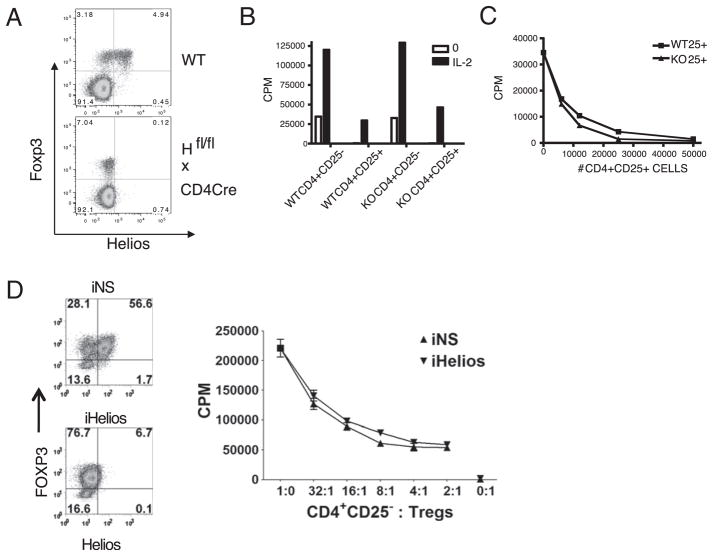FIGURE 7.
Helios-deficient Treg cells express Foxp3 and are anergic and suppressive. A, LN cells from two adult C57BL/6 or two Ikzf2fl/fl × CD4-Cre mice were analyzed by flow cytometry. Cells were gated on CD4+ cells and analyzed for Helios and Foxp3 expression. Shown are representative plots of one mouse from three independent experiments. B, CD4+CD25− and CD4+CD25+ cells were isolated from LN of WT C57BL/6 or Ikzf2fl/fl × CD4-Cre mice. Cells were stimulated with T-depleted splenocytes and anti-CD3 in the presence or absence of IL-2 for 3 d. C, WT CD4+CD25− cells were cocultured with the indicated number and type of CD4+CD25+ cells and were stimulated with T-depleted splenocytes and anti-CD3 for 3 d. D, Human Treg cells were activated and expanded for 14 d and then treated with nonspecific (iNS) or Helios (iHelios) siRNA and rested for 24 h. Treated Treg cells were then cultured alone or in titrated numbers with CD4+CD25−responders stimulated with HLA-DR+ APCs and soluble anti-CD3 for 3 d before pulsing with [3H]thymidine deoxyribose. Panels on the left represent analysis of Foxp3 and Helios in Treg cells at the end of the coculture. The experiments were set up in triplicate, and a representative experiment from three independent experiments is shown (B–D).

